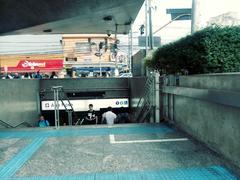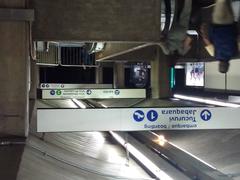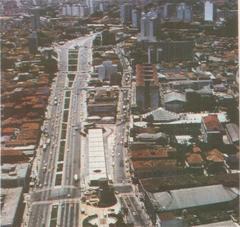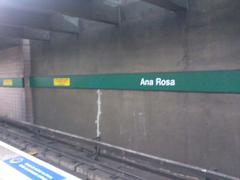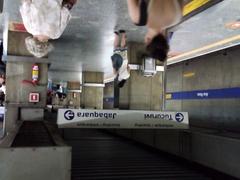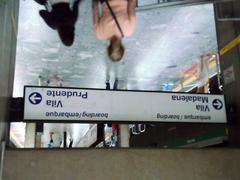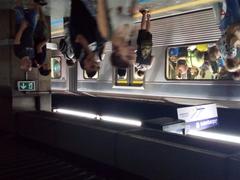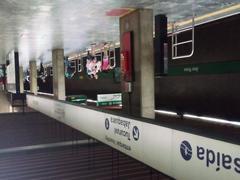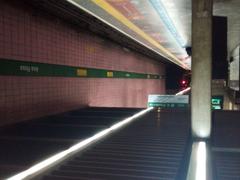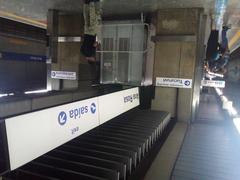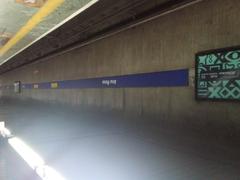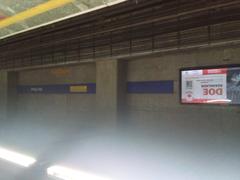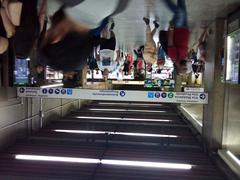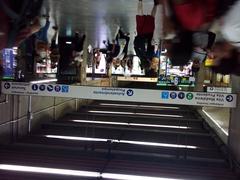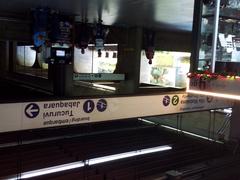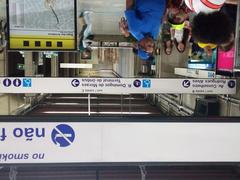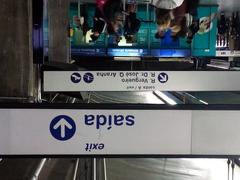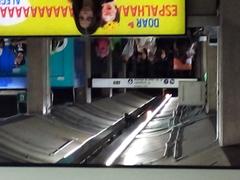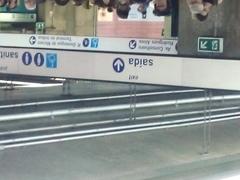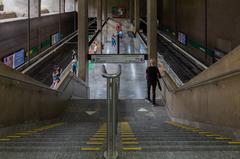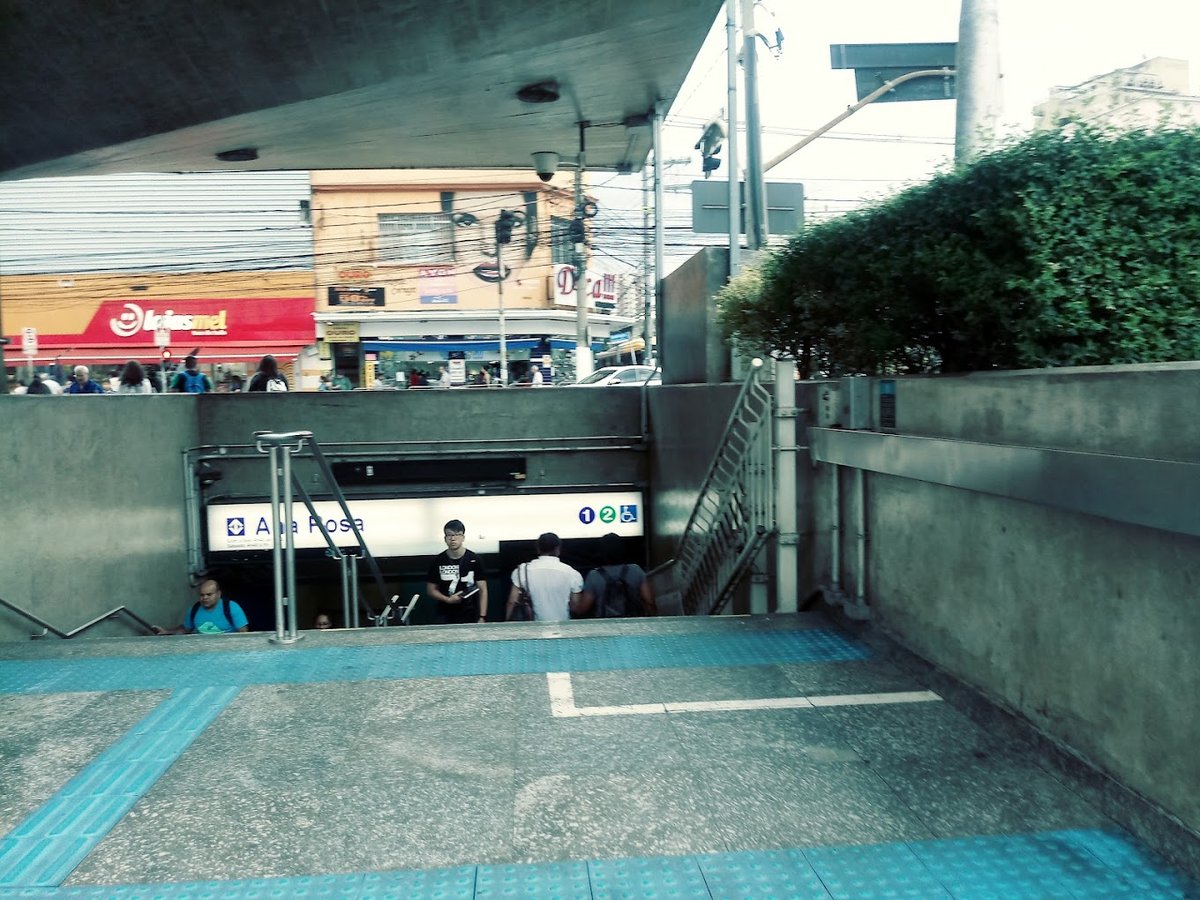
Ana Rosa São Paulo, Brazil: Visiting Hours, Tickets, and Attractions Guide
Date: 14/06/2025
Introduction to Ana Rosa, São Paulo: History, Cultural Significance, and Why Visit
Nestled in São Paulo’s Vila Mariana district, Ana Rosa is a vibrant neighborhood seamlessly blending historical roots, modern urban life, and multicultural influences. Named after Dona Ana Rosa de Araújo Galvão, a 19th-century philanthropist who championed child welfare via the Instituto Dona Ana Rosa, the area stands as a living testament to São Paulo’s philanthropic heritage (Wikipedia - Estação Ana Rosa). Today, Ana Rosa is recognized for its strategic role as a metro interchange, connecting the Blue (Line 1) and Green (Line 2) metro lines, which offer quick access to key city attractions like Avenida Paulista, Ibirapuera Park, and Vila Madalena (São Paulo Metro; Touropia).
Ana Rosa’s rich cultural tapestry is shaped by Italian, Japanese, Portuguese, and Middle Eastern communities, reflected in its diverse gastronomy, lively street art, and bustling community spaces like Praça Ana Rosa (TravelWeekSaoPaulo). The area is also remarkably pedestrian- and bike-friendly, making exploration enjoyable and accessible.
This guide offers a comprehensive look at Ana Rosa—covering its history, metro accessibility, nearby attractions (with visiting hours and ticket information), safety, and practical travel tips. Whether you’re interested in immersing yourself in culture, discovering culinary gems, or using Ana Rosa as a springboard to explore São Paulo, this neighborhood is an ideal place to start (Matador Network - Paulista; Nomadic Matt).
For up-to-date information on events and transit, use the Audiala travel app and official metro resources for a seamless experience in Ana Rosa.
Contents
- Welcome to Ana Rosa: A Historic and Vibrant Neighborhood in São Paulo
- Historical Background and Legacy
- Metro Access and Urban Transformation
- Ana Rosa Metro Station Visiting Hours and Tickets
- Visitor Information and Travel Tips
- Nearby Attractions
- Socio-Cultural Evolution and Urban Identity
- Exploring Ana Rosa: Attractions, Visiting Hours & Transportation
- Key Attractions Near Ana Rosa
- Transportation: Navigating São Paulo from Ana Rosa
- Notable Local Experiences
- FAQs
- Visiting the Instituto Ana Rosa: History, Safety, and Practical Tips
- Summary of Visiting Ana Rosa: Tips and Recommendations
- Sources and Official Links
Welcome to Ana Rosa: A Historic and Vibrant Neighborhood
Ana Rosa is located in the heart of Vila Mariana, offering visitors a blend of rich history, dynamic culture, and urban energy. It’s a prime spot for exploring São Paulo—whether through its historical landmarks, efficient metro links, or nearby attractions.
Historical Background and Legacy
The neighborhood derives its name from Dona Ana Rosa de Araújo Galvão, a noted 19th-century philanthropist dedicated to helping vulnerable children. Her legacy lives on in the Instituto Dona Ana Rosa, which remains a community cornerstone (Wikipedia - Estação Ana Rosa). Over the years, Ana Rosa evolved into a vibrant urban hub, reflecting São Paulo’s values of progress and social responsibility.
Metro Access and Urban Transformation
Ana Rosa Metro Station is a vital interchange, linking Line 1–Blue and Line 2–Green. Opened in 1975 and expanded in 1992, it serves roughly 39,000 passengers daily (Metro São Paulo Info; Wikipedia - Estação Ana Rosa). The station is fully accessible, with lifts and an integrated bus terminal, facilitating travel for all visitors.
Visiting Hours and Tickets
- Metro Operating Hours: 4:40 AM–Midnight, daily
- Ticketing: Purchase single tickets or rechargeable Bilhete Único cards at kiosks or via the São Paulo Metro app
Visitor Information and Travel Tips
- Accessibility: Elevators and ramps ensure easy navigation for all.
- Transportation: Ana Rosa is well-connected by metro and bus; walking and cycling are encouraged.
- Best Times: Visit on weekdays outside rush hours for a relaxed experience.
- Guided Tours: Walking tours that include Ana Rosa and nearby neighborhoods are available via local operators.
Nearby Attractions
Ana Rosa’s centrality makes it a convenient base for exploring São Paulo’s cultural and historical highlights:
- Avenida Paulista: Museums (MASP), Casa das Rosas, galleries, and theaters (Matador Network - Paulista).
- Luz District: Historic architecture and museums, including the Pinacoteca.
- Pinheiros: Noted for its culinary scene and nightlife.
- Vila Madalena: Famous for street art and cultural events.
Socio-Cultural Evolution and Urban Identity
Ana Rosa mirrors São Paulo’s transformation from a provincial city into a bustling metropolis. The area’s residential, educational, and commercial mix fosters a community spirit that honors tradition while embracing modernity. Green spaces and cultural venues further enhance the living experience and attract visitors.
Multicultural Identity and Social Fabric
Ana Rosa is a microcosm of São Paulo’s diversity, with communities of Italian, Japanese, Portuguese, and Middle Eastern heritage (TravelWeekSaoPaulo). This multiculturalism is evident in local bakeries, sushi bars, and Middle Eastern eateries. The neighborhood’s proximity to educational institutions, such as Escola Paulista de Medicina, infuses it with youthful energy and international flair.
Urban Integration and Connectivity
The Ana Rosa Metro Station’s location at the intersection of two major lines means fast, easy access to Paulista Avenue, downtown, and Ibirapuera Park (São Paulo Metro). Walkable streets, bike lanes, and nearby bus lines make Ana Rosa ideal for exploring on foot or by bike.
Artistic Expression and Cultural Landmarks
While Ana Rosa itself is primarily residential, it is just minutes from Avenida Paulista’s flagship attractions such as MASP (open Tue–Sun, 10 AM–6 PM, ~R$50) and the Museum of Modern Art (MAM). Ana Rosa is also close to Vila Madalena’s Beco do Batman, an open-air street art gallery (PetitFute). Most street art is publicly accessible during daylight hours.
Community Life and Social Spaces
Praça Ana Rosa is a lively public square and transport hub, hosting cultural events, fitness classes, and weekend markets. The square is well-lit and accessible, supporting inclusivity and safety (ClaudioAcioly).
Gastronomy and Culinary Diversity
Ana Rosa’s food scene features everything from botecos to international restaurants. The nearby Mercado Municipal (Mon–Sat, 6 AM–6 PM) is renowned for its mortadella sandwiches and fresh produce (NextStopBrazil). Food festivals and street markets offer further opportunities to sample local flavors.
Urban Challenges and Social Inclusion
Ana Rosa contributes to São Paulo’s ongoing efforts to address social inequality through infrastructure improvements and inclusive urban planning (ClaudioAcioly). These initiatives foster a sense of community and sustainability.
Practical Visitor Information
- Metro Hours: 4:40 AM–Midnight
- Tickets: Metro ~R$4.40; MASP ~R$50
- Accessibility: Most public spaces and transit stations are wheelchair accessible
- Safety: Remain vigilant in crowded areas, especially at night
- Attractions: Paulista Avenue, Ibirapuera Park, Vila Madalena, Parque da Aclimação
- Events: Check community boards and social media for upcoming festivals and markets
Exploring Ana Rosa: Attractions, Visiting Hours & Transportation
Key Attractions Near Ana Rosa
- Ana Rosa Metro Station: Open 4 AM–midnight, accessible, bilingual signage, Bilhete Único card accepted (Wikipedia)
- Avenida Paulista: Open daily; pedestrian-only on Sundays, 7 AM–7 PM; hosts major events (Touropia)
- MASP (Museu de Arte de São Paulo): Tue–Sun, 10 AM–6 PM, ~R$45, free on Tuesdays
- Ibirapuera Park: Daily, 5 AM–midnight, free entry; museums inside charge R$10–20 (Touropia)
- Independence Park & Ipiranga Museum: Park 6 AM–6 PM, museum Wed–Mon, 10 AM–5 PM, free with online booking (Nomadic Matt)
- Mosteiro de São Bento: Daily, 7 AM–6 PM, free entry
- Minhocão (Elevado Presidente João Goulart): Pedestrian/cycling zone after 8 PM weekdays and weekends (Touropia)
- São Paulo Zoo & Botanical Garden: Zoo Wed–Sun, 9 AM–5 PM, tickets ~R$60; Botanical Garden daily, 6 AM–6 PM (São Paulo Secreto)
Transportation: Navigating São Paulo from Ana Rosa
- Metro: Largest in Latin America, 15 lines, 200 stations, fares ~R$4.40 (TripSavvy)
- Bus: Over 16,000 buses, Bilhete Único card compatible (Frommer’s)
- Taxis & Ride-Sharing: Uber and 99 are popular; taxis can use bus lanes, tipping optional
- Cycling & Walking: Dedicated bike lanes, pedestrian-friendly zones like Avenida Paulista on Sundays
- Airport Connections: GRU, CGH, and VCP airports accessible via metro, bus, or taxi
Tips
- Avoid rush hours (7–10 AM, 5–8 PM)
- Use apps like Moovit or Google Maps
- Learn basic Portuguese phrases for easier navigation
Notable Local Experiences
- Walking Tours: Explore Old Downtown, Vila Madalena, Ibirapuera Park, and Paulista Avenue (Nomadic Matt)
- Cultural Festivals: Look out for Pacaembu Book Fair, Japanese festivals, and events at CTN (São Paulo Secreto)
- Observation Decks: MAC Lookout, Shopping Light for city views
Visiting the Instituto Ana Rosa: History, Safety, and Practical Tips
History and Significance
Originally founded in the early 1900s to shelter and educate abandoned children, the Instituto Ana Rosa embodied São Paulo’s commitment to social welfare. While the original building was demolished in 1950, its legacy remains through ongoing cultural projects and commemorative sites in the area.
Visiting Hours and Access
- Casa das Rosas: Tue–Sun, 10 AM–6 PM, free
- Local Tours: Walking tours available through agencies and online platforms
- Metro: Ana Rosa station is the main access point
Safety
Ana Rosa is generally safe during the day. Exercise caution with valuables, especially in crowds and at night. Women are advised to travel in groups after dark.
- Emergency Numbers: 190 (police), 192 (ambulance), 193 (fire), 180 (women’s unit)
Local Cuisine
Ana Rosa offers a variety of culinary experiences:
- Restaurants: Jiquitaia (modern Brazilian), Maní, Mocotó, Tanit (Mediterranean), Kouzina (Greek)
- Local Specialties: Feijoada, coxinha, pão de queijo, pastel, caipirinha
Additional Tips
- Language: Portuguese is spoken; translation apps are useful
- Payments: Credit cards widely accepted; carry cash for small vendors
- Health: Pharmacies and private hospitals easily accessible; drink bottled water
- Weather: Pack for warm, humid summers and mild winters
- Responsible Tourism: Support local businesses and respect local customs
FAQ
Q: Is the original Instituto Ana Rosa building open to visitors?
A: No, it was demolished in 1950, but cultural sites nearby honor its legacy.
Q: How do I get to Ana Rosa?
A: Use the São Paulo Metro; Ana Rosa station is on the Blue and Green lines.
Q: Is Ana Rosa safe?
A: Yes, especially by day. Take standard precautions.
Q: Are guided tours available?
A: Yes, via local agencies and online platforms.
Q: What local foods should I try?
A: Don’t miss feijoada, coxinha, pão de queijo, pastel, and caipirinha.
Summary: Key Points, Tips, and Recommendations
Ana Rosa stands as a captivating São Paulo destination, intertwining philanthropic legacy, multicultural vitality, and modern urban convenience. With excellent metro links, accessible public spaces, diverse cuisine, and a wealth of nearby cultural attractions, Ana Rosa is more than a transit hub—it’s a vibrant neighborhood for families, solo travelers, and culture seekers alike (Wikipedia - Estação Ana Rosa; ClaudioAcioly).
For the best experience, explore local markets, enjoy food festivals, and use digital tools like the São Paulo Metro app and Audiala for real-time updates (Touropia; São Paulo Metro).
Ana Rosa embodies the spirit of São Paulo—a city defined by contrasts, connections, and cultural richness.
Sources and Further Information
- Wikipedia - Estação Ana Rosa
- Matador Network - São Paulo Neighborhoods
- TravelWeekSaoPaulo
- ClaudioAcioly
- Touropia - Tourist Attractions in São Paulo
- São Paulo Metro (official site)
- NextStopBrazil
- Nomadic Matt
For visuals, include high-quality images with descriptive alt text such as “Ana Rosa Metro Station entrance,” “Avenida Paulista skyline,” and “Street art near Ana Rosa.” Interactive maps and virtual tour links are also recommended for enhanced engagement.
